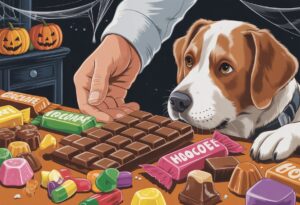Your dog’s eyes can suffer from many severe problems. You may have control over some. You can avoid many accidents through care and puppy proofing your environment. Other eye diseases are congenital or hereditary. They may affect mixed and purebred animals. They may occur at a young age or manifest themselves at a later stage of life. Examples of common inherent eye diseases include Cataracts, Progressive Retinal Atrophy (PRA), Collie Eye Anomaly, Entropion, Ectropion, and Glaucoma.
Cataracts
Cataracts are a common disease of the eyes. They are commonly found in older dogs or in those suffering from diabetes. The hereditary form is Juvenile Cataracts. As in the case of any other type of the diseases, the lenses of the eyes become cloudy. A lens may have a small dot or become opaque. This can produce complete blindness. In the case of severe cataracts, the vet may be able to remove them from the eye.
Dog breeds more susceptible to hereditary cataracts include Norwegian Buhund, Siberian Husky, Golden Retriever, Minature Schnauzer, American Cocker Spaniel and Boston Terrier.
PRA
This disease may result in partial or complete blindness. It may begin at an early age of 4 months or appear much later. The causal factor of blindness is degeneration (Atrophy) of the retina. As the retina deteriorates, the eyesight worsens. There is no cure or treatment.
The recessive gene or even dominant gene is common to several breeds of dogs including Lhasa Apsas, Miniature Poodles, Toy Poodles, Golden Retrievers, Labrador Retrievers, Irish Setters, English Spaniel, American Cocker Spaniel and Tibetan Terriers.
Collie Eye Anomaly (CEA)
If the middle layer of the eye develops abnormally, Collie Eye occurs. This is a detachment of the retina. It usually is obvious by the time the dog is 2 years old. Forms can be mild or severe. As the name suggests, it is found prevalent among Collie dogs. This includes Rough and Smooth Collies as well as Border Collies and Shetland sheepdogs. The problem is hereditary. Currently, there is no treatment. Breeders are attempting to eradicate it through careful breeding programs.
Ectropion
Ectropion is also an inherited disease. In this condition, the lower eyelid sags, drooping down and exposing its interior. The action exposes the eyeballs. In mild cases, your Vet will recommend the use of eye drops and antibiotic and corticosteroid opthalmic ointments. In cases where the problem is severe, your animal may require surgery.
Breeds with hereditary ectropion include the Bassett Hound, the Bloodhound, the Boxer, Bulldog, Labrador Retriever, Gordon Setter, Shih Tzu, American Cocker Spaniel, Clumber Spaniel, English Cocker Spaniel, English Cocker Spaniel, Springer Spaniel and Bull Terrier.
Entropion
Entropion is an eye condition where the eyelid turns inward. In this position, it begins to cause irritation as the eyelashes and fur rub against the eyeball. In turn, this creates vision problems. A vet can correct Entropion surgically. This is a minor operation.
Entropion is a hereditary problem common to the following breeds of dogs: Bernese Mountain Dog, Chow Chow, Bull Mastiff, Mastiff, Newfoundland Dog, Great Pyrenese, Saint Bernard and Sharpei.
Be aware of the problems possibly affecting your dog’s eyes. When you decide to purchase a specific breed, be sure you know of any inherited diseases. Research the different types of dogs and their inherent problems. This will make you knowledgeable in the search. It will also help you move towards early diagnosis of any possible eye – and other health problems congenital or hereditary in your favorite pooch.





